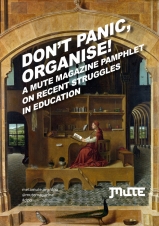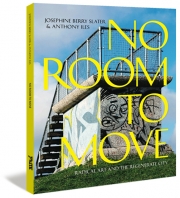Reading e-books: why Kindle is not the new standard (yet)
Our lives are filled with the use of standards, as Alexander Galloway (2006) explained already quite some time ago. The old-fashioned VHS was a standard that has been replaced with a new one, the DVD, and there are a lot of standards on the Internet and in Internet protocols that we all accept as the best way to use this medium. How did these protocols become standards? Users with technological knowledge had a big influence on them. ANSI (American National Standards Institute) states that something is able to turn into a technological standard when it’s consensus-driven, open, transparent and flexible. For example, the Internet protocols have become a standard because they were broad open initiatives of free exchange and debate (Galloway 2006, p. 189).
However, in the world of digital publishing and reading, no standard has been set so far. There are all kinds of different formats in which a digital book can be published, ranging from the well-known PDF files to EPUBs and books made with iBooks Author. But not all of these formats and ways of reading are equally popular and reading a digital book automatically seems to involve an e-reader or tablet these days.
 A very popular device for reading e-books is Amazon’s Kindle, which is being used by a large audience (Striphas 2010). But having a large audience doesn’t mean that Kindle is a standard. There must be a reason it is not the one and only device that is used for reading e-books. According to Ted Striphas (2010), Amazon’s strategy with Kindle has been far from open, transparent and flexible – key features for something to become a standard, as said above. The Kindle is what Jonathan Zittrain (2008) calls ‘a tethered appliance’, which means that even though you as a user buy the e-reader, the vendor, Amazon, is still able to make changes to the product after you’ve bought it. Although this is useful for keeping software up to date, with Kindle this has also lead to unfortunate events for the users. Books that had been paid for, disappeared from devices when Amazon thought that was necessary to avoid copyright infringement, for example when they found out that a company didn’t possess the publishing rights and yet still sold e-books through Amazon (Striphas 2010, p.309).
A very popular device for reading e-books is Amazon’s Kindle, which is being used by a large audience (Striphas 2010). But having a large audience doesn’t mean that Kindle is a standard. There must be a reason it is not the one and only device that is used for reading e-books. According to Ted Striphas (2010), Amazon’s strategy with Kindle has been far from open, transparent and flexible – key features for something to become a standard, as said above. The Kindle is what Jonathan Zittrain (2008) calls ‘a tethered appliance’, which means that even though you as a user buy the e-reader, the vendor, Amazon, is still able to make changes to the product after you’ve bought it. Although this is useful for keeping software up to date, with Kindle this has also lead to unfortunate events for the users. Books that had been paid for, disappeared from devices when Amazon thought that was necessary to avoid copyright infringement, for example when they found out that a company didn’t possess the publishing rights and yet still sold e-books through Amazon (Striphas 2010, p.309).
Events like this demonstrate that the user doesn’t have full control over the device after buying it, and not knowing what updates or changes will be next, you will definitely not be the owner of an open and transparent device with a Kindle. But Kindle has got competition from Apple, Barnes & Noble, Sony, etc. (Striphas 2010, p.309). Strikingly, these are all tethered devices too. Does that mean we’re stuck with whatever these sellers decide for us? According to Galloway, the answer is no. One very important criterion for a standard is that it has to be adopted voluntarily by the mass (2006, p. 190), and in order for that to happen there has to be a consensus among users that a device works properly and answers to their wants and needs.
The question is if these tethered appliances can get that consensus and become the new standard for digital books. In order for that to happen, the vendors will have to listen to their users, there will have to be more openness and flexibility to meet the needs of the readers. At the same time, this transparency and flexibility have to lead to a system that doesn’t put too much into the hands of the users, because, as Zittrain writes, “even the safest Volvo can be driven into a wall” (2008, p. 102). Tethered appliances seem to prevent that kind of thing by more or less forcing users to use devices in exactly the way the developers want them to. This leaves no room for savvy users to improve the aspects that are conflicting with their wants and needs and it is exactly this non-transparency that prevents tethered e-readers from becoming a standard.
Until at least one producer of digital reading devices has figured out how to combine this control by the developer with control and room for improvement by the user, no standard for reading a digital book will be adopted.
Literature
Alexander Galloway, ‘Protocol versus Institutionalization’, in Wendy Hui Kyong Chun and Thomas Keenan (eds) New Media, Old Media: A History and Theory Reader, London: Routledge, 2006, pp. 187-198.
Jonathan Zittrain, ‘Tethered Devices, Software as Service, and Perfect Enforcement’, in The Future of the Internet – And How to Stop It, New Haven: Yale University Press, 2008, pp. 101-126
Ted Striphas, ‘The Abuses of Literacy: Amazon Kindle and the Right to Read’, in Communication and Critical/Cultural Studies 7.3 (2010): pp. 297-317.
Mute Books Orders
For Mute Books distribution contact Anagram Books
contact@anagrambooks.com
For online purchases visit anagrambooks.com





